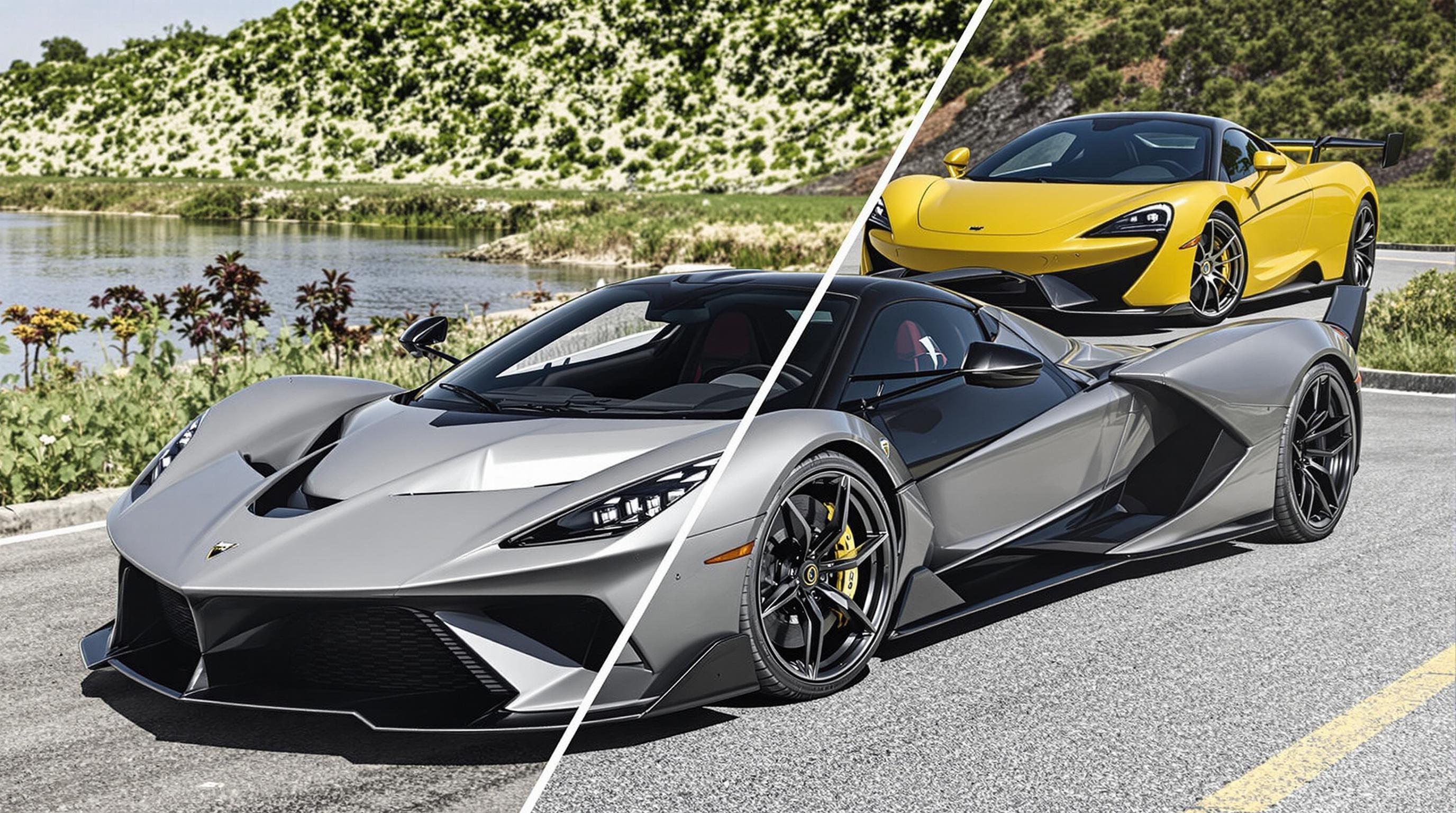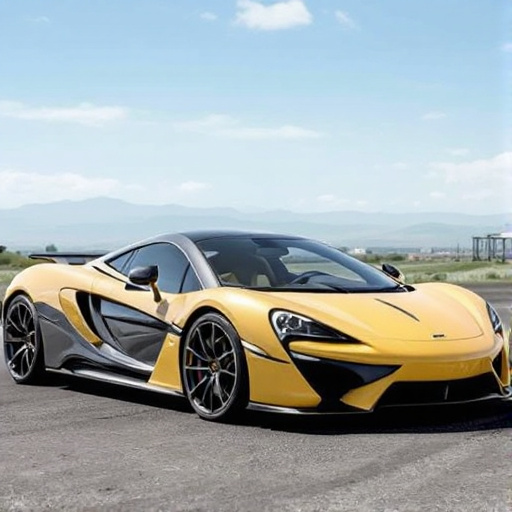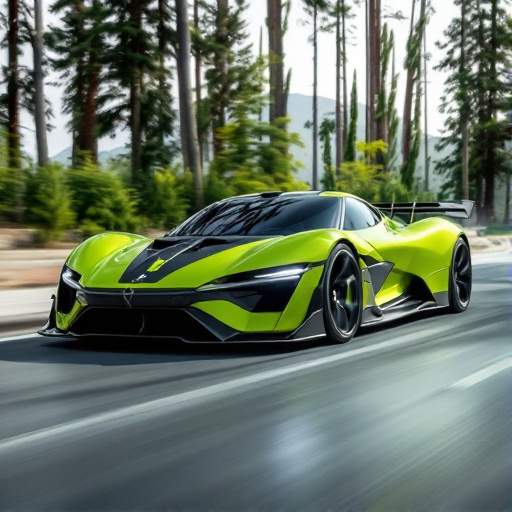Related Articles
- Unveiling the Unthinkable: How Your Social Media Posts Could Impact Your Car Insurance Premiums
- "From Showroom to Social Media: How Dealerships are Becoming Digital Storytellers in 2023"
- "From Showroom to Stream: The Rise of Virtual Reality Test Drives at Dealerships"
- Revving Up Sales: How Virtual Reality is Transforming the Dealership Experience for Shoppers and Sellers Alike
- Selling Experiences: How Dealerships Can Transform into Immersive Automotive Entertainment Hubs
- The Surprising Impact of Your Credit Card Habits on Car Financing: What You Didn't Know!
Unleashing Speed: The Surprising Role of American Super Cars in Climate Change Mitigation Strategies
Unleashing Speed: The Surprising Role of American Super Cars in Climate Change Mitigation Strategies
American supercars, known for their breathtaking speed and stunning designs, have unexpectedly emerged as pivotal players in climate change mitigation strategies. This article explores how these powerful machines are influencing automotive technology, sustainability, and public perception of eco-friendly practices.
Speed Meets Sustainability: An Unexpected Partnership
Imagine revving the engine of a sleek supercar; the roar is undeniably intoxicating. Yet, beneath the surface of this adrenaline-fueled world lies a growing commitment to sustainability. The rise of electric supercars exemplifies how a seemingly extravagant industry can pivot towards eco-friendliness. Recently, Ford revealed the all-electric Mustang Mach-E, a vehicle that has been making waves not just for its performance but also for its commitment to lower emissions. The sizzling acceleration paired with zero tailpipe emissions showcases how speed can align with sustainability, energizing both enthusiasts and environmentalists alike.
The Electric Revolution: Tesla as a Case Study
Established in 2003, Tesla has become synonymous with electric vehicles, transforming the landscape of automotive innovation through speed and sustainability. Their high-performance Model S Plaid can reach 0-60 mph in just under two seconds—defying expectations of what an electric vehicle (EV) can achieve. This model not only boasts impressive speed; it also serves as a statement that electric vehicles can compete with traditional supercars. According to the International Energy Agency, global electric vehicle sales reached 6.6 million units in 2021, more than doubling the previous year. This shift in the market demonstrates how consumer appetite is evolving towards high-performance EVs.
Performance Metrics: The Shift to Hybrid Technology
Many American manufacturers are investing in hybrid technologies, blending the power of gasoline engines with electric motors. Chevrolet presents an excellent case with the Corvette E-Ray, poised to debut soon. This hybrid model promises to enhance existing performance while allowing drivers to enjoy the thrill of driving without excessive carbon footprints. By integrating electric technologies, brands fulfill the modern consumer's desire for speed while accommodating the environmental concerns of today’s society.
The Public’s Perception: From Gas Guzzlers to Green Machines
The transition isn’t merely about the cars themselves; it challenges and shifts perceptions. Whereas once, owning a supercar was a statement of indulgence, it is now becoming a statement of responsibility. Car enthusiasts have a unique opportunity to drive change by selecting vehicles that push boundaries in both performance and environmental impact. According to a survey conducted by Consumer Reports, over 70% of potential car buyers express interest in electric vehicles due to environmental concerns. This statistic highlights the emerging ethos among consumers that speed and sustainability can coexist harmoniously.
The Role of Legislation in Accelerating Change
Regulatory frameworks are also instrumental in shaping the landscape of high-performance vehicles. In 2021, California proposed stricter emissions standards, calling for new vehicles sold by 2035 to be zero-emission. Such legislation compels automakers to innovate, potentially accelerating the development of electric and hybrid supercars.
This mandates a shift not only in vehicle technology but also in the mindset necessary to adapt to these inevitable changes.
Luxury Has a New Definition
For decades, luxury in the automotive realm has meant high horsepower and plush interiors, but the current narrative is changing. With brands like Porsche and Rimac leading the charge in electric supercars, luxury now encompasses a commitment to sustainability. The Rimac C_Two, an electric hypercar, boasts an astonishing 1,914 horsepower, proving that performance and planet-friendly practices are not mutually exclusive. Furthermore, these companies are focusing on sourcing materials responsibly and improving manufacturing processes to minimize waste, thus aligning with the growing public demand for ethical consumption.
A Case for the Carbon Footprint
One might ponder how a vehicle that costs over $200,000 can relate to carbon footprint reduction. Surprisingly, supercars typically aren't mass-produced, and brands heavily invest in R&D to create manufacturing techniques that yield fewer emissions. For instance, the McLaren production process involves a meticulous lean manufacturing approach, reducing excess waste while optimizing the lifecycle of each vehicle. According to a study by the World Economic Forum, companies that adopt sustainable practices can reduce their carbon footprint by up to 70% in just a few years. This change reflects a broader dedication to sustainability beyond fuel use alone.
Energy Source Matters: Rethinking Fuel for Supercars
While electric supercars are truly revolutionary, the type of energy powering these machines is equally important. According to the U.S. Department of Energy, transitioning to renewable energy sources such as solar and wind for vehicle charging can significantly lower emissions. With the majority of charging stations in the U.S. powered by fossil fuels, the full environmental benefits of EVs can only be realized when paired with renewable energy. Creating neighborhoods equipped with solar carports would enable supercar owners to turbocharge their rides sustainably, setting an example for broader society.
Technological Innovations: How Supercars Drive Change
The exhilarating world of supercars is a wellspring of technological breakthroughs. Many innovations first introduced in high-end supercars—like advanced aerodynamics, composite materials, and regenerative braking—trickle down to mainstream vehicles, improving overall energy efficiency. For example, Ferrari was one of the pioneers in using hybrid technologies in their LaFerrari model, showcasing how high performance can inspire eco-friendly technologies across the automotive spectrum. Such advancements demonstrate that supercars can serve as a sandbox where cutting-edge technology flourishes in the pursuit of sustainability.
Entertain and Educate: Sparks of Responsibility
American supercars aren't solely about performance—they also play an educative role. The excitement of driving and the passion these vehicles inspire can be used to educate the public about sustainability. Auto shows and events can focus on showcasing how performance and eco-friendliness can intersect. Consider the idea of a “Green Racing” league, where supercar manufacturers compete not only for speed but also for energy efficiency, potentially sparking interest among younger enthusiasts in adopting greener practices.
The Future is Bright: A Green Racing Horizon
Envision a world where the roar of supercar engines is paired with displays of eco-consciousness. Racing leagues could set parameters around energy efficiency—perhaps introducing races where fuel consumption is optimized alongside speed. The potential for sponsorships with renewables companies could shift the narrative from flashy to forward-thinking. Imagine a Tesla driver winning at Le Mans, not just for raw speed, but for ingenuity in engineering green technology. This future showcases how integrating sustainability into the world of supercars can create excitement while driving societal change.
A Humorous Take: Speedy Sustainability
Now, I know what you’re thinking: can a supercar save the planet? While they may not be a replacement for wind turbines or solar panels, they certainly help spark conversations. Picture this: a billionaire driving his electric Lamborghini at warp speed, grinning like a kid on Christmas morning while arguing passionately about why he’s saving the planet. It’s hard to take environmental issues seriously when they're juxtaposed with the whimsicality of supercars. However, it’s this unique intersection of thrilling experiences and sustainability that makes the conversation so noteworthy.
What’s Next? The One Thing that Seems Certain
The trajectory for American supercars in the climate change narrative appears bright. As younger generations increasingly prioritize sustainability, automakers will continue to innovate. It’s no longer merely about who can design the fastest vehicle; it’s about who can accelerate the journey toward a sustainable future while keeping speed alive. Remember, if we can turn supercar enthusiasts into environmentally-conscious advocates, we may just be speeding our way to a greener future.
In Summary
In conclusion, American supercars are horizontally bridging speed and sustainability, forging new paths toward mitigating climate change. Through innovations in technology, consumer preferences, and regulatory support, these cars are not just thrilling machines—they can also become symbols of ecological responsibility. The challenges that lie ahead demand creativity and collaboration, making the role of supercars not just a matter of speed, but a moving testament to sustainability.




